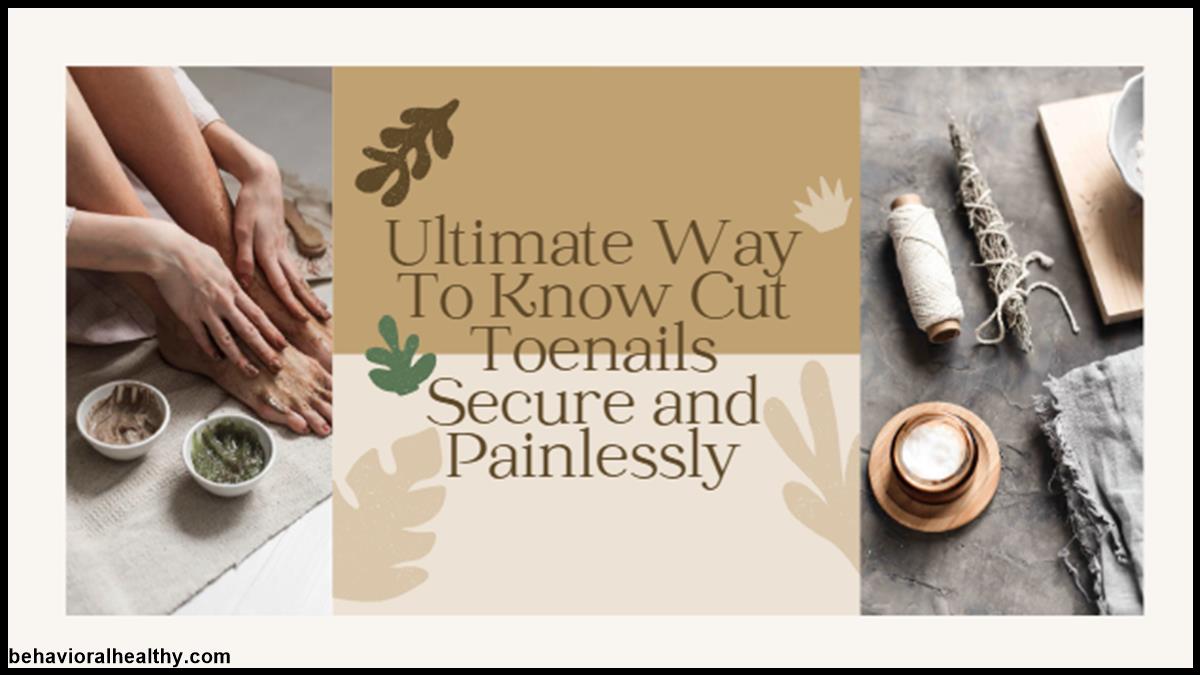Discover a simple way to care for your toes and feel confident with every step.
Table of Contents
How to Properly Cut Your Toenails to Stop Ingrown Nails
Ingrown toenails are a common but painful condition for millions of people worldwide. According to the American College of Foot and Ankle Surgeons, ingrown toenails account for approximately 20% of all visits to foot doctors.
One of the most common causes of this problem is improper toenail trimming. Learning the proper technique for cutting toenails can help you avoid discomfort, infection, and even serious complications. This guide will lay out step-by-step instructions for how to cut toenails to avoid ingrown nails and keep the feet healthy.
What Are Ingrown Toenails?
An ingrown toenail occurs when the edge of the nail grows into the surrounding skin. This can lead to redness, swelling, pain, and sometimes infection. The most common contributors to ingrown toenails are:
- Trimming nails too short or with rounded edges
- Tight or poorly fitting footwear
- Injury to the toenail
- Genetic predisposition
- Poor foot hygiene
With the proper technique for cutting nails and foot care, you can greatly decrease the chance of an ingrown toenail forming.
How To Cut Toenails (Correct Way Complete Guide)
Trimming your nails properly is essential for healthy feet and preventing painful ingrown toenails. Knowing how to cut toenails to avoid ingrown toenails can save you from discomfort and future complications.
Gather the Right Tools
The right tools are key to preventing ingrown toenails. You’ll need:
- Clippers with sharp, straight edges for toenails
- A nail file or emery board
- Tools are sanitized with rubbing alcohol
- Moisturizer to keep the nails and skin healthy
Soften Your Nails
This is because toenails may become rough and thick, making it more difficult to keep them trimmed. Soaking the feet in warm water for 10 to 15 minutes softens the nails and decreases the chance of splintering. Epsom salt can remove further inflammation and keep your feet clean.
Cut Straight Across
Cut toenails straight across. This is a key measure for preventing ingrown toenails. Be careful not to round the edges, which can cause the nail to grow into the skin. Avoid cutting the nail in one try; instead, cut the nail little by little.
Keeping Your Nails at the Right Length
Cut toenails too short to increase the chance of an ingrown nail. Leave a bit of white at your nail tip. Nails trail slightly beyond the tip of your toe, so they protect it without digging into the skin.
Use a Nail File for Nicer Edges
After cutting, smooth out jagged edges using a nail file or emery board. This stops sharp corners from digging into the surrounding skin.
Keep Your Tools Clean
Bacteria and fungi thrive in warm, humid spaces. To help avoid infections, always disinfect your clippers and files with rubbing alcohol before and after use.
Additional Ways to Avoid Ingrown Toenails
Choose Proper Footwear
Tight or pointed footwear puts extra pressure on the toes, thus increasing the risk of ingrown toenails. Pick shoes with a wide toe box that allow people to move them. Wearing properly fitted shoes made from breathable materials can also help prevent moisture buildup, reducing the chances of infections and other foot issues.
Maintain Good Foot Hygiene
- When you wash, use warm water and soap daily.
- Make sure to dry your feet well, particularly between the toes.
- Use moisturizer to avoid dry, fragile nails.
- Do Not Pick or Peel the Nails
Others pick at or tear their nails rather than cutting them. This can cause rough, jagged edges that could burrow into the skin.
Look Out for Signs of Early Ingrown Nails
Examine your toenails frequently for signs of redness, swelling, or tenderness. However, if you observe any early signs of an ingrown toenail, the sooner you deal with it, the better. Taking immediate action can help prevent pain, infection, and the need for more intensive treatment.
Home Remedies for Ingrown Toenails
If you have already developed an ingrown toenail, you can try these remedies before getting it medically treated:
- Soak in warm salt water to reduce swelling and pain.
- Use a clean cotton ball or a piece of dental floss to lift the nail gently so it doesn’t dig in deeper.
- Treat with an antibiotic ointment to help prevent infection.
- Wear open-toed or comfortable shoes to relieve pressure.
If the pain does not go away or if you see pudge and swelling, see a podiatrist for professional treatment.
When to See a Doctor
Most ingrown toenails can be treated at home. But some need medical help. If you are having:
- Severe pain or swelling
- Symptoms of infection, like pus or a bad smell
- Repeated recurrence of ingrown toenails despite proper care
- Diabetes or circulation problems, which raise the risk of complications
To Conclude
A simple trick that can save your toes from all the pain and suffering associated with ingrown nails is knowing how to cut toenails to avoid ingrown toenails. You’ll save some unnecessary discomfort by cutting straight across, keeping your nails at the right length, and practicing good foot hygiene. Just be sure to use the appropriate tools, wear the proper footwear, and remain conscious of any initial signs of issues.
Ensuring overall well-being with a greater emphasis on foot health will help prevent issues like ingrown toenails. If problems continue, see a health professional for appropriate care and treatment.

